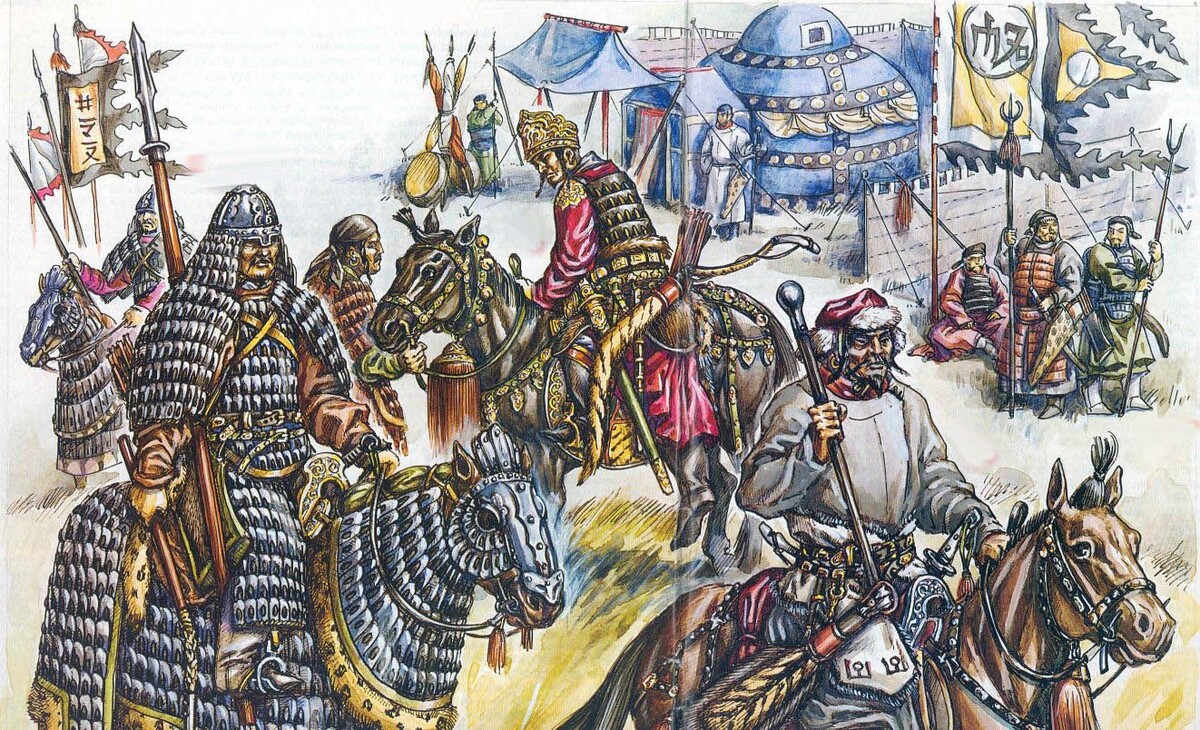All of us have studied history and know that the Mongol Empire broke up into the Golden Horde, the state of Hulaguids, the Chagatai Khanate and the ulus of the Great Khan, which included Mongolia and China. But few people know that at one time there was a fifth state, and it was much stronger than the others.

Let’s tell about what became with Ugedei ulus. Why nobody knows about it?
At the end of his life Genghis Khan held a family kurultai, at which he redistributed the possessions among his sons and appointed his successor. Dzhuchi passed the lands of eastern Kipchaks together with the order to continue their conquest; Chagatai got the former Karakitai Khanate; Tolui, as the youngest son, according to the ancient tradition passed Mongolia.
The third son Ugedei, along with the title of great khan, also acquired his own allotment. It included the lands of the Naimans, Uyghurs and partly Karakitai — territorially it was the present Xinjiang, the westernmost region of China, and Western Mongolia.
But since Ugedei had an imperial rank and was considered the supreme ruler of all Mongols, neither he nor his son Guyuk, who became the third great khan, did not seek to somehow distinguish the gift received from Genghis Khan among the vast number of their possessions. The question of their political affiliation arose when the ruling dynasty changed in the Mongol Empire.

In the understanding of people of his time, the appointment of Ugedei as a great khan did not mean that this position would automatically be inherited by his descendants. The supreme ruler had to be elected by the Genghisids from among themselves, and the most likely candidates for the throne were the children of Tolui and Ugedei, whose possessions were located in close proximity to the Mongolian political center. After Ugedei and Guyuk, the title was given to Munke, son of Tolui, followed by his brother Khubilai. Consequently, the Ugedeids were removed from supreme power and were forced to seek autonomy for their ancestral domains.
In the mid-13th century, Haidu, a grandson of Ugedei on the line of his fifth son Hashin, became their leader. He was born in the 1230s, and during the reign of the great khan Munkae was one of the few princes of his house who ruled his own small appanage. These were the steppes southeast of Lake Balkhash.
After Munkhe’s death, his brothers began a struggle for the khan’s title. Arig-Buga, then viceroy of Mongolia, lost. Khubilai, ruler of China, accordingly won, although he had to come to terms with the independence of other Mongol states.
In this civil war, Haidu maneuvered between the two brothers and managed to greatly increase his ulus. He not only took control of his ancestral lands, but also subjugated what was not part of his inheritance. In 1269 on a neutral territory in the valley of the Talas River, the rulers of the Ugedei, Chagatai and Djuchid ulus held a kurultai, where they mutually recognized their territories and concluded an alliance against Khubilai, in case he intended to bring them to submission. Two states ruled by the Toluid dynasty — the Hulagu Ilkhanate in the Middle East and the Yuan Empire headed by Khubilai, which included Mongolia and China — were left behind.
The latter had impressive resources and nominally remained the supreme ruler of all Mongols. Since he was distracted by the final conquest of the Middle Kingdom, the Ugedei ulus was allowed to survive. However, Khubilai decided to act through intermediaries and pitted first his own brother and then the Chagatai Khanate against Haidu. Nevertheless, the latter was the greatest of Mongol generals since Genghis Khan and Subudai, and managed to repel all invasions. In 1289, Haidu even briefly captured Karakorum.
He was the actual suzerain of the Chagatai Khanate, appointing and overthrowing its rulers and collecting tribute from its cities. With the Juchids of the Golden Horde relations were neutral or even friendly, with the Ilkhanate — exchange of raids across a small section of the common border. One way or another, the balance of power shifted again in the Mongol world, which marked the emergence of the fifth khanate.
True, the great khans did not want him to recognize the independence of his most important rival. When the descendants of Khubilai finally gave up the idea of capturing Japan, they had the opportunity to send against Ugedei ulus all their forces. At that time Chapar Khan, son of Haidu, who in 1310 surrendered to the will of the winner after a long war, ruled there.
The ulus was divided between the “main” Mongol Empire and the Chagatai Khanate and was never revived again. Ugedei’s descendants had by then fallen in wars, the few surviving representatives of this family could no longer fight for supremacy in the Mongol world
